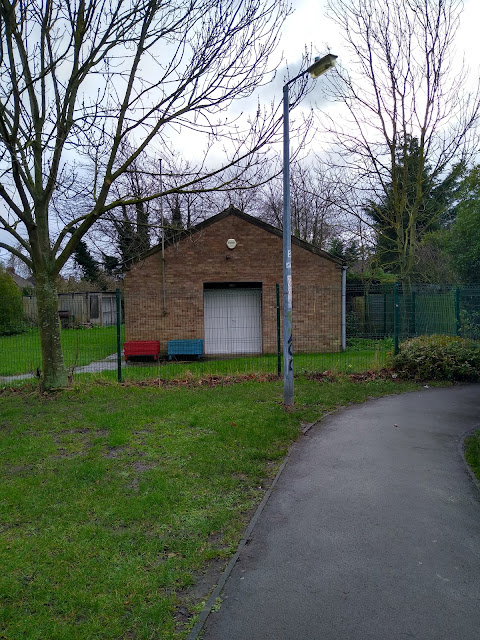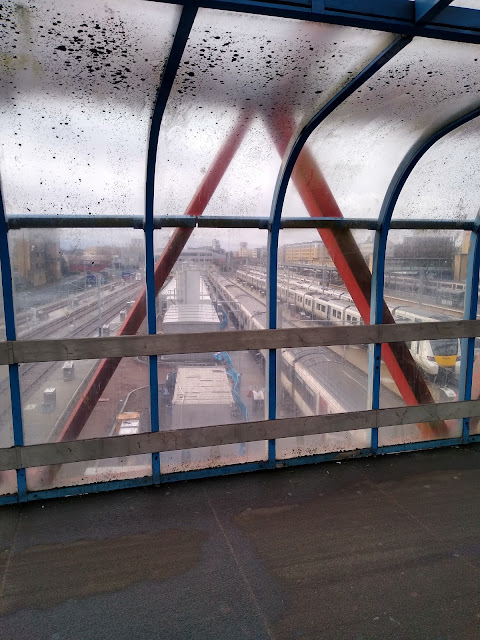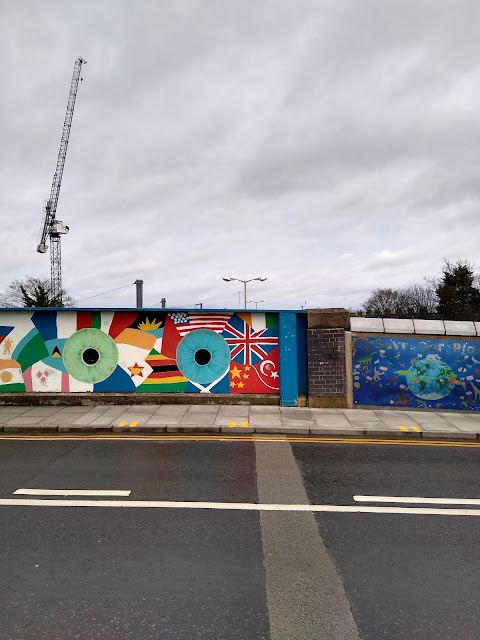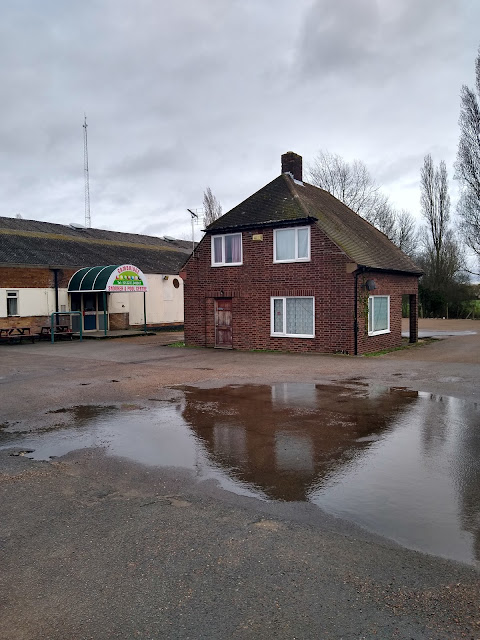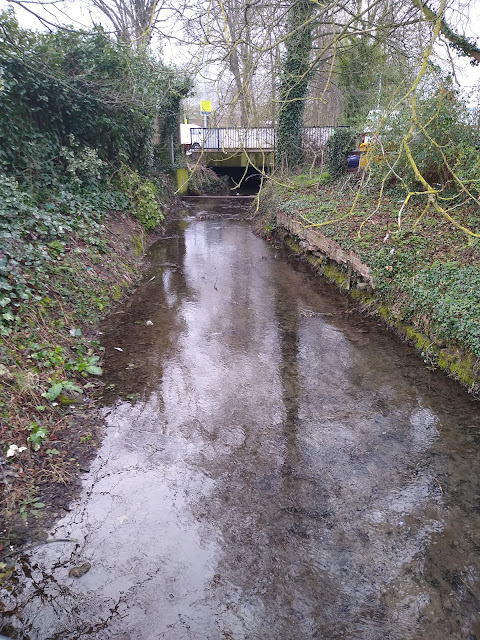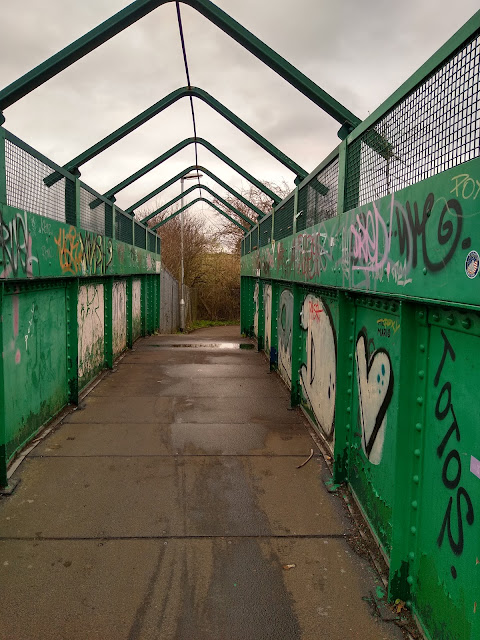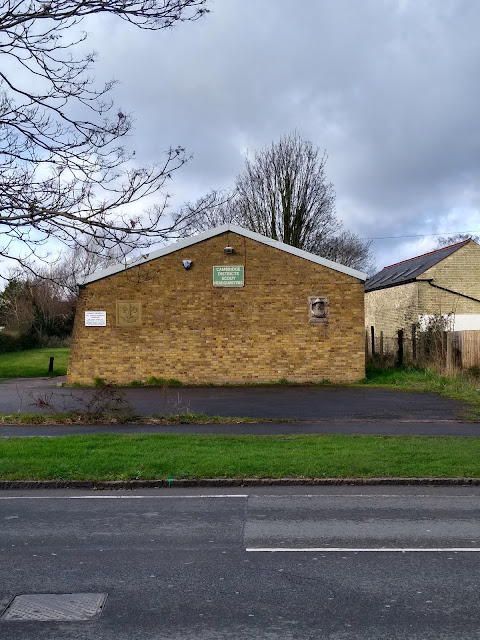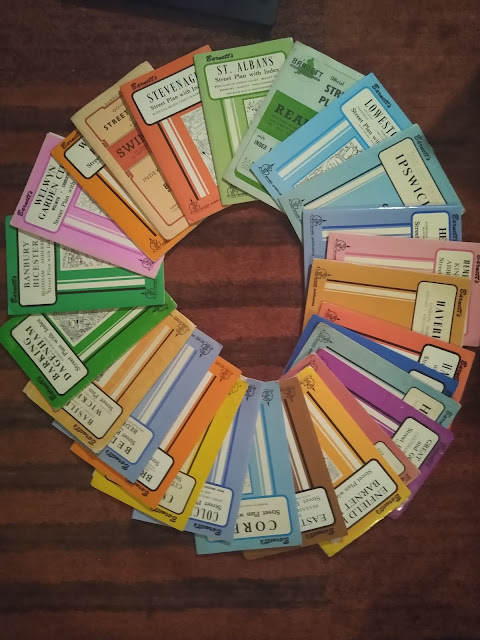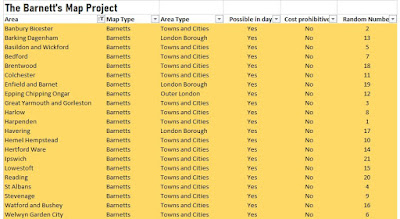Romsey Town, which is the epicentre of the Ward, is a place I have long associations with. My mum's family came from the area, helping to construct the Labour Club which I was taken to as a kid for Sunday Lunchtime Bingo. Later I used to pass through the area at night on my way home from gigs and pubs in town as a teenager. About 12 years ago I gravitated to the area to live and am still here. Despite the more recent years of increasing gentrification that have happened despite my presence, the place still projects an atmosphere of 'Romseyness'. This is hard to describe but is something resulting from an amalgam of the particular Victorian street patterns dating from the Railway Age and Little Russia and the buildings contained within. The houses themselves, the other buildings that interperse them including the Labour Club (now closed dilapidated but still standing), the ABC Barbecue Chip Shop, The Co-op and places like the flat roofed Bed Centre on the corner of Ross Street where a rare giant advertising billboard stands, give off the same constant underlying atmosphere. In addition, a number of familiar characters have always inhabited the area. Some have been around for years, some are more recent. The sad departure of 'Nice Weather Lady' whose funeral was the other week marks the loss of Romsey's version of Disco Kenny. But others are still here. Romsey Ward encompasses a wider area and I wasn't sure the atmosphere was really the same in the more peripheral zones along the boundary. Indeed, until I decided to do this walk, I'd been pretty much unaware of where the boundary was.
Terminalia takes place on the 23rd February, the last day of the Roman year so marking a temporal boundary, but concerned with boundaries and borders of all types. Terminus is said to protect all within his bounds and help focus on priorities and release problems over which you have no control.
I considered that ward boundaries were things that most people were not that interested in and had little control over anyway, other than to respond to obscure local authority consultations about any propsed changes. So as well as convienient, the Romsey Ward Boundary seemed appropriate. Unlike most people, who have already let go of any thoughts of understanding or caring about the vagueries of local authority boundaries or more likely probably never bothered to pick them up in the first place, I had got stuck in a loop of fruitless internet searching. This brought nothing but frustration at the lack of comparitive temporal ward maps to be found. I had vague recollections of talk of ward boundary changes to Romsey a few years back, so had doubts about the accuracy of the Council website version of the map which, although sanctioned by Ordnance Survey, was dated 2012. In the end it appeared that, as far as I could work out, the changes made were County Council ones to electoral districts, which are not to be confused with City Council wards. I let go of any thoughts of confirming this beyond all doubt and settled for the 2012 map.
I started on a footpath that bisects an enclosed patch of green space off Rustat Road. Corrie Road Guides Hut sits fenced off at the end of this enclosure and straddles the ward boundary, this path takes a right turn more or less at the border with the next ward, Coleridge. The hut sits directly on the boundary and the lamp post more or less marks the boundary line in front of it. The green space, too small to be featured on google maps and, as far as I know, nameless, had been spruced up a bit. Grafitti was almost absent and strangely two Chrstmas trees had been planted along with more traditional daffodils.
The view from the cycle bridge down the track to Mill Road Bridge, the next border point on my route, was as ever obscured by the moss and black mold that forms around about eye level on the perspex covering.
I doubled back to reach Mill Road Bridge via Argyle Street, past the Housing Co-op that backs onto the Railway Line, a place as near to the boundary as it's possible to live. The familiar mural on the bridge was accompanied by several laminated notices from the 'Stop the Train Wash' campaign. The giant train wash was, apparently, one of the main reasons for the works on the bridge back in the summer. I don't recall any mention of it anywhere during the 'Mill Road Summer' of the bridge closure. The campaign literature features a photoshopped impression of what the facility will look like. The image shows a giant nine meter tall dark grey monolith, stretching along and looming over the gardens of the houses on Great Eastern Street that back onto the railway. It brought to mind The Black Tower'. I could see how it might bring about similar levels of mental decline in the residents of Great Eastern Street to that experienced by the protagonist in the 1980s Channel 4 TV short. The structure will, if it happens, be sited in the railway owned no-mans land on the border between wards and operational mostly overnight, giving it a 24 hour presence even when it's too dark to see.
At the end of Great Eastern Street, a no through road, a wall marks the boundary with the railway land behind. A majestic old stink pipe rises up it front of it.
I doubled back and took the parallel Cavendish Road. At the end I went as far as I could to the left where a road/track joins the railway land, until the point where I became an unauthorized person.
Looming up beyond the gate was an object resembling a watchtower, reminicent of something from the Berlin Wall. I probably had spent too long looking at a book called 'Cold War East Anglia' in Waterstones the day before.
Along Cromwell Road, backing onto the railway, is Winstanley Court, a recent(ish) development of flats. Presumably and oddly named after Gerald Winstanley, who lead the Diggers in opposing the enforced boundaries brought by the enclosures. While laudable, the more local Jake of The Style, who is said to have lead an uprising that prevented nearby Coldhams Common being enclosed, is not remembered in any of the new development along this stretch. I attempted to walk through, thinking I could emerge somewhere back on Cromwell Road nearer to Coldhams Lane. But it appeared there were three separate developments, cut off from each other by walls and fences. The individual estates had been enclosed, each a labyrinth of dead ends. It appeared each was owned by a different developer, all three keen to prevent wandering between their plots.
I had wafted back from late 1970s TV ad nostalgia by the time I reached the pinnacle of the Bridge from where I observed the railwway border once more. This was the only point I strayed across the border from Romsey. I followed the Bridge down along the other side on the boundary between Petersfield and Abbey, and crossed the other side into Abbey briefly before going back up and into Romsey again. It's not possible to cross at the apex and I didn't want to retreace my steps.
On the way down I noticed a poster for a past event at the Centre for Computing History. The strange blue androi- like womans face was slightly unearving. I had heard a story on the radio earlier about a human like robot being produced in Japan that could wince at 'pain', the most lifelike yet. This was a far cry from the days of the ZX81 and of Clive Sinclair and his ilk, members of which I assumed the monochrome faces on the poster belonged to. According to the radio story, the boundaries between artificial and real intellegence, human and robot, were becoming ever increasingly blurred.
At the bottom of the bridge I turned into Coldhams Road, the main artery of the light industrial estate starting underneath the arches. This was a somewhere too old school to be considered a business park, with a place that looked like a mini-scrapyard next to a tile outlet and several MOT garages. Coldhams Road hugged the railway line on one side and a series of mostly single story flat roofed premises behind spikey metal fences on the other. I had expected little sign of life and noted the absence of the bacon roll van normally seen during the week. But I was not alone. Several cars passed me and further on I saw people getting out to enter a brown flat roofed premise that would not have looked out of place in 1970s Dr Who. It turned out the building is now used by a church of some kind.
Just beyond was a bizarre and incredible old house (well, maybe 1930s) called Orchard Cottage. I had never seen it before, this being virgin territory for me. Net and bedroom curtains were up, making it look inhabited. It's the only house on this stretch of the boundary, and possibly the most unusual feature I'd seen so far. It wouldn't have looked so weird surrounded by an Orchard next to Coldhams Common, which given it's name I suspected it was in an earlier period.
Just past this another building was being used as church, I couldnt see anyone but could hear a pastor sermonising in a manner more suited to the Southern United States than a deserted light industrial estate on the Romsey boundary.
I followed the line of the railway along the common until the next border point. I've written about the Black Bridge (no longer black) before. I climbed up to view the railway line and observed recent grafitti referring to someone or something called 'Futhead'. More impressive was the lichen at the top of the bridge which grew in the shapes of small countries and continents, sparking visions of self contained micro-worlds where, although unobservable, things were happening.
This short part of the journey was relatively uneventful, other than an encounter with a distressed antique looking telephony box in someone's front garden that bore similarly vintage 'Nigel' tag.
At the roundabout, I passed the brown single storey buildings of what used to be the Adult Education Centre, a small complex that radiated 1960s municipality and Dr Who vibes. On the other side of the road it was impossble not to notice the much more recent and oversized C3 Church building. This manifestation of the Australian franchise megachurch projected something that felt more akin to 'V' than Dr Who and more akin to big business than municipality.
I headed around the green and through a passage on Upware Road that lead into the East Barnwell Nature Reserve, via a gate allowed me to cross the boundary where it stretches behind the houses. I walked the pathway behind the gardens and saw that the last house had an outbuilding of some kind at the end of the Garden, just within the Romsey Boundary. I couldn't tell what the square concrete looking structure was used for. It may have been a laundry room or maybe Romseys most far flung Air BnB. Whatever, the structure resembled an outpost bunker, suited to being on the border.
I turned into The Tins, one of the Pathways to Cherry Hinton from Brookfields and Burnside. This part of the Tins runs just inside the boundary with Coleridge Ward. On the Romsey side is the Army Reserves/Saxon Works site. Beyond the trees, as indicated by the 'Danger Deep Water' sign, is a lake created from an old pit. On the Coleridge side there are two more lakes, this time created out of pits of The Norman Works. These were fairly recently the subject of a campaign to open up 'The Romsey Lakes' and create a 'Romsey Beach', which seems a bit cheeky on Romsey's part. They have also been called 'the Cherry Hinton Lakes'. But never 'the Coleridge Lakes'.
I reached the footbridge taking the path across the railway border. The bridge marks a three way confluence of boundaries of Romsey, Coleridge and Cherry Hinton. At this extremity of
it's border, there was little tangible feeling of Coleridge present
within the cast iron structure. It crosses exclusively between the
realms of Romsey and Cherry Hinton like a miniature edgelandic bi-frost.
This meant I had to double back and head along Perne Road to get to Budleigh Close. At the end is another boundary point with Coleridge where the close converges with Burnside, The Snakey Path, the Allotments and one of the 'Romsey Lakes'.
Back along Budleigh Close I saw a faded blank noticeboard attached to somebodys garden fence. Mosses and lichens had colonised it, taking advantage of prolonged inactivity by human hands. The houses behind date from the 1980s but the notice board seemed to belong to a previous age of 1950s council housing that made up a large swathe of Coleridge. My grandparents lived in such a house, not very far from this spot. The board acted as a portal, triggering flashbacks to the Coleridgian atmosphere I associated with the area of post war housing stretching from Cherry Hinton Hall through to the area around Coleridge Rec. My mind had briefly passed through the ward boundary, temporally as well as spacially. I was momentarily back in a vague time of side passages, garages, recs, and white dog poo ridden grass verges near where ice cream vans parked and where it was permenently Saturday or Sunday.
Further, a Banksy-esque piece of street art that proclaimed 'life is beautiful' decorated a wall. Cars had parked in a rare display of consideration to leave a gap enabling passers by to observe it. The mysterious 'M' had claimed responsibility, his or her mark placed within the floating heart/balloon.
The passage next to the scout hut across Perne Road was more or less on the boundary border but was a dead end.
Instead, I diverted until I was back on the boundary running along the back fence of Coleridge School field. The fence gave a solid feel of division between the two wards.
The fence ran out as I emerged into Mamora Road but there was a clear difference in feel between each side of the road. A distinct 'Romseyness' on one side and a 'Coleridgeness' on the other. The map showed all of Mamora Road as being in Romsey. But it felt like the boundary existed right along the middle of the street.
I crossed into Coleridge briefly for the final stretch, to Corrie Road and back through the passage that met the boundary at the Guides Hut. The nameless green space was both ward boundary confluence and terminal point, a fitting realm for Termimus. I lingered a while and considered the variation in atmosphere in Romsey. The outer edges of the ward were different, yet often similar, with the feel of neighbouring wards often seeping and mixing in to create hybrid zones at the borders. The Coldhams Road industrial estate stood out as somewhere with its own microclimate, the only place that seemed totalky separate. Nuttings Road too seemed to have a certain independence, and was somewhere that could easily defect to Abbey with which it shared a more similar atmosphere. These thoughts drifted away and I departed the realm of Terminus, leaving behind no offering of wine or suckling pig (the Co-op wasn't open yet), just the walk itself, which felt more than sufficient.
